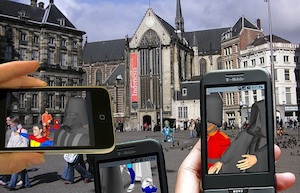
Just the beginning for urban mobile crowding.
If mobile data networks are going to be capable of handing 1,000-times more traffic in the near future – as Qualcomm believes they will – the number of cell sites will have to increase by 100-times, at least in dense urban areas. That was the pictured painted last night by Ronen Vengosh, vice president of marketing and business development for PureWave Networks, at a small cell seminar organised by the Wireless Communications Alliance on Qualcomm’s Santa Clara campus.
“You have to put [small cells] where the people are”, Vengosh said. To get that done, carriers will have to work more closely together to colocate equipment, because access to optimal locations will be limited. Outdoors, cities won’t want company after company putting in hundreds of cells. Indoors, venue owners won’t want to deal with multiple entities. “Urban permitting is no walk in the park”, he pointed out.
AT&T is eyeing an end run around local restrictions, as Verizon is already doing, by putting small cells on utility poles, and leveraging their status as an incumbent wireline company. “As a [local exchange carrier], we have the right to be in the public right of way”, said Randy Schwabacher, real estate and construction manager for AT&T.
It’s nice to be a LEC, but it’s a partial fix at best, even for service providers that can wiggle through that loophole.
As mobile traffic becomes more congested, pressure will mount on cities, from increasingly desperate carriers, frustrated consumers and the always entertaining tin foil hat brigade. The only long term answer is for all players to accept responsibility for solving each other’s problems. Otherwise, you’ll just get 100-times more lawsuits and permit hearings, not 1,000-times more bandwidth.
